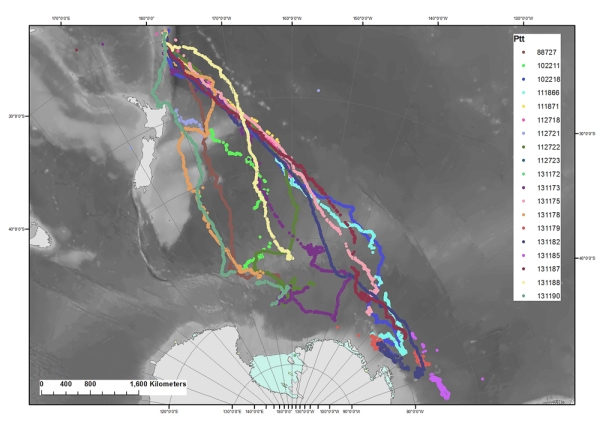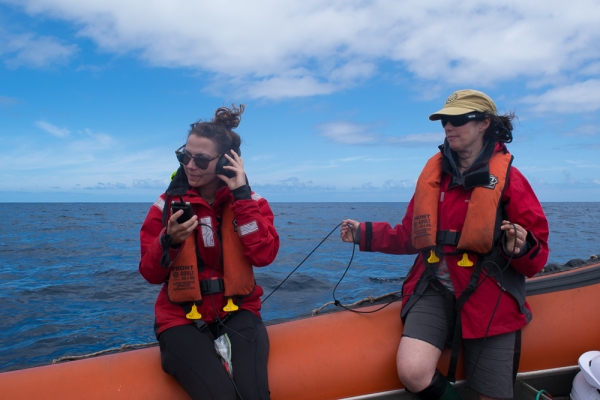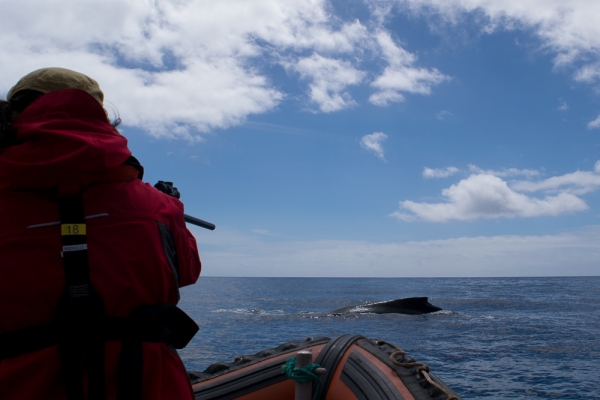25 October 2016
During September and October Raoul Island is like Grand Central Station for humpback whales.
Ever since we arrived here at the Island we have been surrounded by whales. This has been great news for the Whale Team on the ship. Every morning and afternoon the team has been going out in the small motorboat to try and get biopsy samples, fluke (tail) photographs and song recordings. This sampling is part of ongoing work on the Oceania humpback whale population, where researchers are trying to understand why it is taking longer to recover from the effects of whaling than other humpback populations.
In late September 2015 Rochelle Constantine, from the University of Auckland, was up here at Raoul Island attaching satellite tags to 25 humpback whales. She then tracked these whales all the way down to their feeding grounds in Antarctica. This was the first time the whales have been tracked this far into the Antarctic. Rochelle and her team discovered that some of the whales travel far further than they expected, across almost to the Antarctic Peninsula.
In addition to the satellite tags Rochelle deployed, she also took biopsy samples for genetic identification work, as well as fluke photos to compare with a catalogue of known individuals from across the Pacific. What she found was that the whales passing Raoul Island come from a number of Pacific breeding sites spread across 3,600km, from New Caledonia in the West, to the Cook Islands in the East.
Another really interesting thing about Raoul Island is that it is thought to be a place where whale songs are exchanged between different populations of humpback whales that do not usually socialise with each other anywhere else.
Whale sampling is both the exhilarating thrill of the hunt and a lesson in patience. Often times we get tantalizingly close to getting the shot away to get a biopsy, only then to have the whale disappear under the water and vanish, and not resurface anywhere in the vicinity of the boat. Other times things go according to plan with the biopsy dart fired at the right time to connect with the surfaced whale and the sample recovered.
Yesterday was a great day for the whale team, they recovered biopsy samples from 11 whales and gathered four good fluke images. This morning’s expedition was a bit more frustrating, with only one humpback biopsy sample recovered. However, several good fluke photographs were taken as well as some great snippets of whale song.
We have another two days sampling whales at Raoul Island so there is still time to collect more samples.



